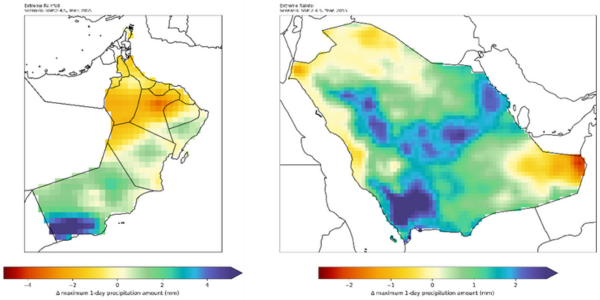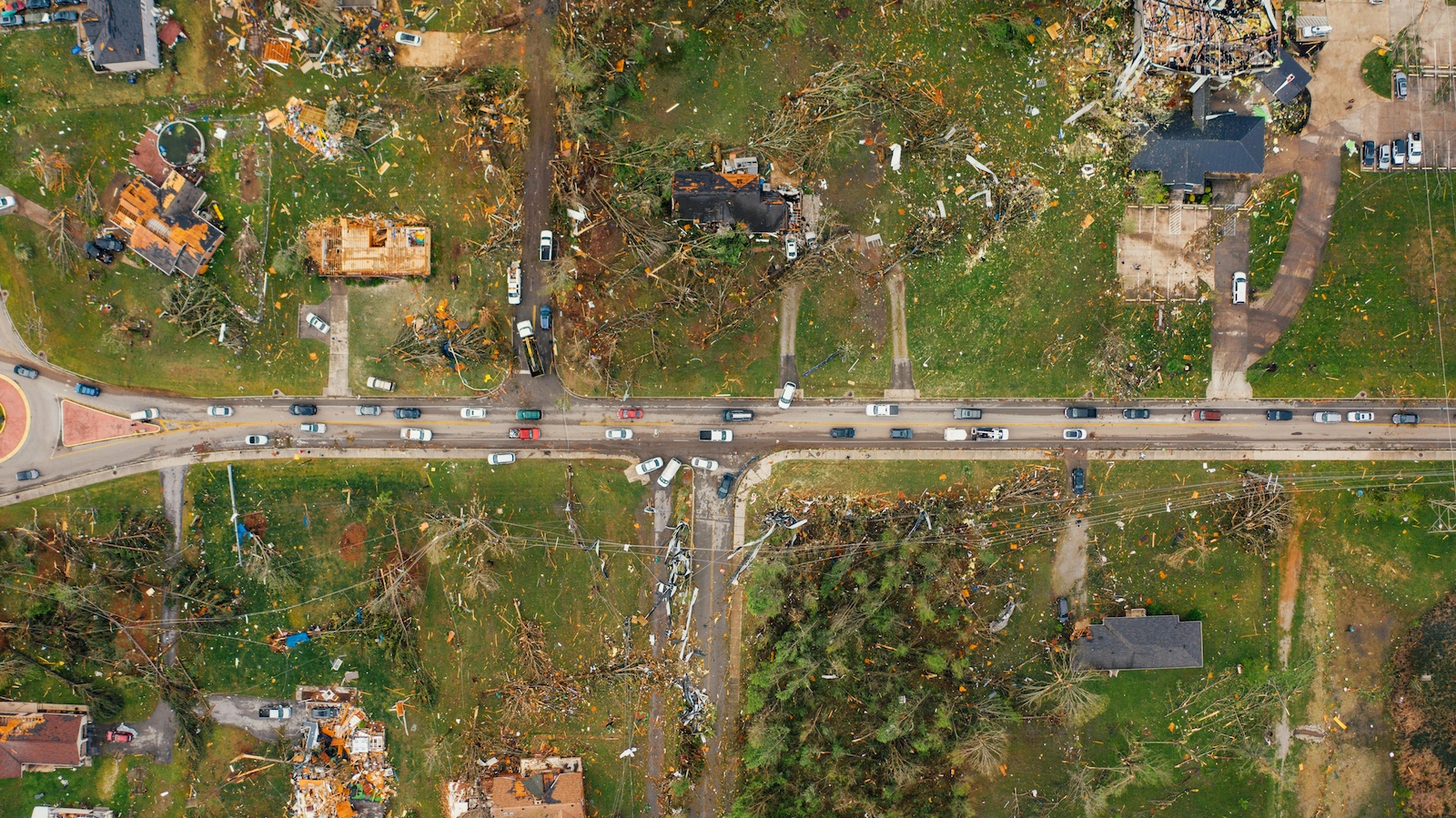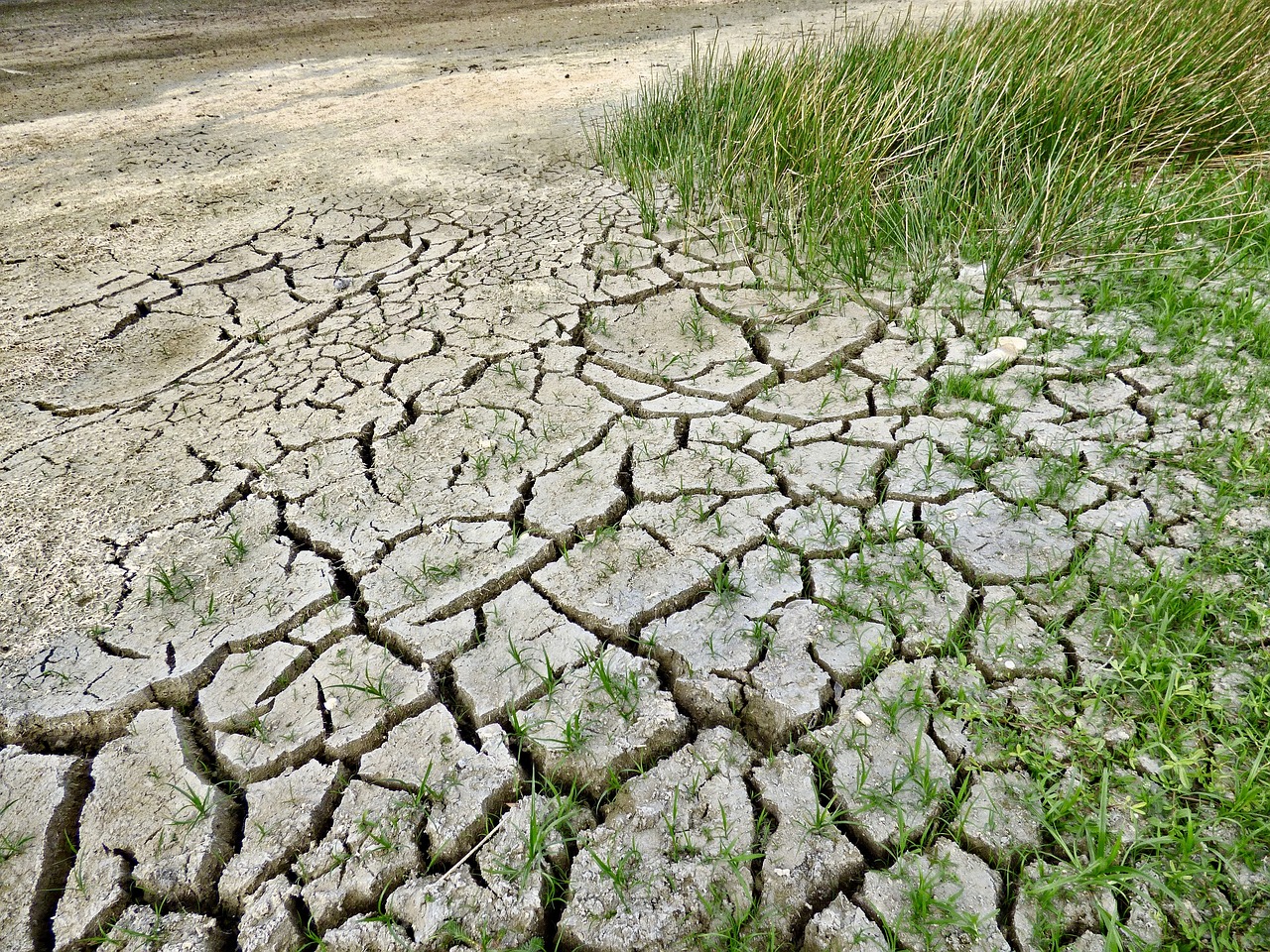The climate in the Middle East has seen an increase in the frequency of both hailstorms and heavy rains.
Oman has been experiencing cyclones on an almost annual basis, with the latest being Cyclone Asna in August/September 2024. One of the most damaging to date was Cyclone Gonu, which hit Oman and the east coast of the UAE in 2007, resulting in 70 deaths in Oman and 10 in Fujairah, as well as significant damage to property (estimated $4 billion of damage in Oman).
Saudi Arabia is no stranger to extreme weather, with flash floods hitting the country on several occasions in the 1970s, 1990s and more recently in 2009 and 2011 when flooding hit Jeddah, causing average damages of around $3 billion per event.
The UAE has seen irregular extreme weather events over the last 70 years, mostly in the form of flash floods due to intense rains, and it is possible that future events will increase in magnitude as the climate changes.
Interestingly, none of the major natural catastrophe tools used by the insurance industry today show any sort of major (extreme) natural catastrophe risks in the Arab Gulf region (other than one-in-50-year return storm surges in coastal areas). The renewables industry, and solar farms in particular, have been severely affected by severe convective storms in other parts of the world, most notably in North America. Hail damage is a rare but not impossible phenomenon in the Middle East, and the UAE has recently seen hail damage to infrastructure and vehicles, even though the size of the hail has so far been modest.
Will that change with changes to the climate? Although unlikely to have the same impact as on the North American renewable industry, some negative future effects are possible.
See also: Insurers Must Evolve to Survive Climate Crisis
Predictions
The confidence in the forecasts of cyclones and flash floods remains low due to their relative rarity and the scale of the event. While cyclones are large events that can be captured by weather forecast models, the direction of the cyclone and its impact is much harder to forecast. The intensity of a cyclone depends on a large number of factors, including the track the cyclone takes, which itself is influenced by several factors that are difficult to predict, e.g., sea surface temperatures and other weather patterns.
Flash floods are much harder to forecast, as the processes that lead to them are typically only a few kilometers in size, smaller than the resolution of most forecast models. Flash floods are typically caused by sub-daily rainfall extremes, caused by localized heating, resulting in an unstable atmosphere and leading to a convective storm (which can also cause hail). However, whether the rainfall is absorbed by the ground or overflows resulting in flash flooding depends on the preceding conditions – too wet a ground means it cannot absorb any more rain, too dry a ground reduces its ability to absorb rain.
Climate change projections for the Arabian Peninsula show an increased risk from extreme rainfall that most typically leads to flash flooding. A warmer atmosphere can hold more moisture, thus when the conditions that favor extreme rainfall, and thus flash flooding, occur there will be more moisture in the atmosphere, leading to more extreme rainfall.
Figure 1 shows changes in extreme rainfall by 2055 under the SSP2-4.5 warming scenario (the current most likely warming scenario) using data from climate risk models. It shows that there is a large variation within both Oman and Saudi Arabia to changes in the rainfall pattern. Southern Oman shows a large increase in rainfall, directly leading to an increased risk of flash flooding. While northern Oman shows a decrease in extreme rainfall, this does not necessarily result in a decreased risk of flash floods. A drier soil could result in less rain being absorbed by the ground, increasing the risk of flash floods when extreme rainfall does occur.
Saudi Arabia (at right) has a much larger region showing an increase in extreme rainfall, where the majority of Saudi Arabia sees an increase in extreme rainfall occurrence. This suggests that the risk of flash flooding across the country will increase.

Figure 2 also shows an increase in drought risk across Oman, Saudi Arabia and the UAE for the SSP2-4.5 scenario. This will lead to drier soil conditions, particularly in the summer, increasing the risk of flash flooding from extreme rainfall. The data is not able to capture the processes that lead to sub-daily rainfall events; however, it does show that the conditions favor an increase in flash flooding risk.

There are other perils that may become worse due to climate change and thus potentially start causing significant losses in the region, in particular hail. The impact of climate change on hail remains very uncertain, due to the scale at which the processes that lead to hail occur. However, most projections for hail are for an increase in size and occurrence. This could have a big impact on the renewable energy sector, specifically solar panels, which remain vulnerable to hail and haven't seen that kind of damage in this part of the world yet. We also need to consider the changing nature of perils; with cyclones holding more moisture, we could see a greater impact from the rainfall/flooding from a cyclone, and not the wind, as traditionally seen.
Impact of Mitigation Aids
Improved forecasts of cyclones can reduce the impact through mitigation measures, e.g., increasing the resiliency of buildings, boarding up windows, and removing potential debris. Examples of this can be seen most recently in Florida in preparation for Hurricanes Helene and Milton. While losses were still experienced, they were smaller due to the warning and preparation. Florida also requires that when greater than 25% of the roof is damaged, the whole roof is to be repaired to new building codes. This has resulted in an increased resilience of buildings to hurricane winds.
A similar approach can be taken to flash flooding, even if it is more difficult to forecast. Improved drainage, identifying potential blockages and flood resiliency schemes that absorb water for short periods can significantly reduce the impact from flash flooding. It is also possible to increase the resiliency of assets to flash flooding by identifying potential water ingress locations and adapting them to prevent the ingress of water.
See also: Severe Weather's Effects on Auto Claims
Conclusions
An analysis of Oman and Saudi Arabia shows localized increased risk of extreme rainfall and subsequent flash floods if the SSP2-4.5 scenario becomes reality. Analysis data can be used to reduce long-term risk to a project by applying mitigation measures for future scenarios at the design stage of the project.
Will we eventually see weather events having an impact on premiums given the rapid deployment of renewables in the region? Although unlikely in the near future, a single damaging event (even if isolated) could have a massive impact on the market. The recent flash floods in the UAE caused severe damage to the Noor 1 Concentrated Solar Plant, possibly reaching a staggering $500 million of insured damage.
Insurers have until recently been relatively happy ensuring that an asset is adequately protected for a one-in-100 or one-in-200-year flood. We are now starting to see instances where insurers move toward requesting the one-in-500-year flood to be the governing condition for flood protection. This trend is likely to continue and might also come with requirements for predictive models to be used for large market assets to determine present and future natural catastrophe risks. The key is how these risks are managed and resiliency is embedded.









